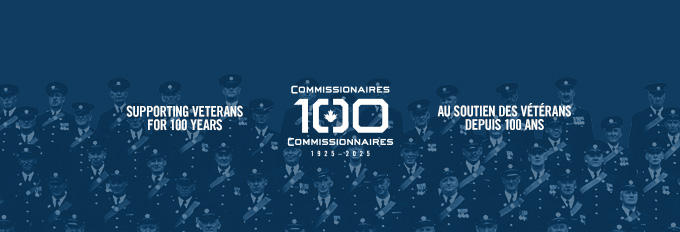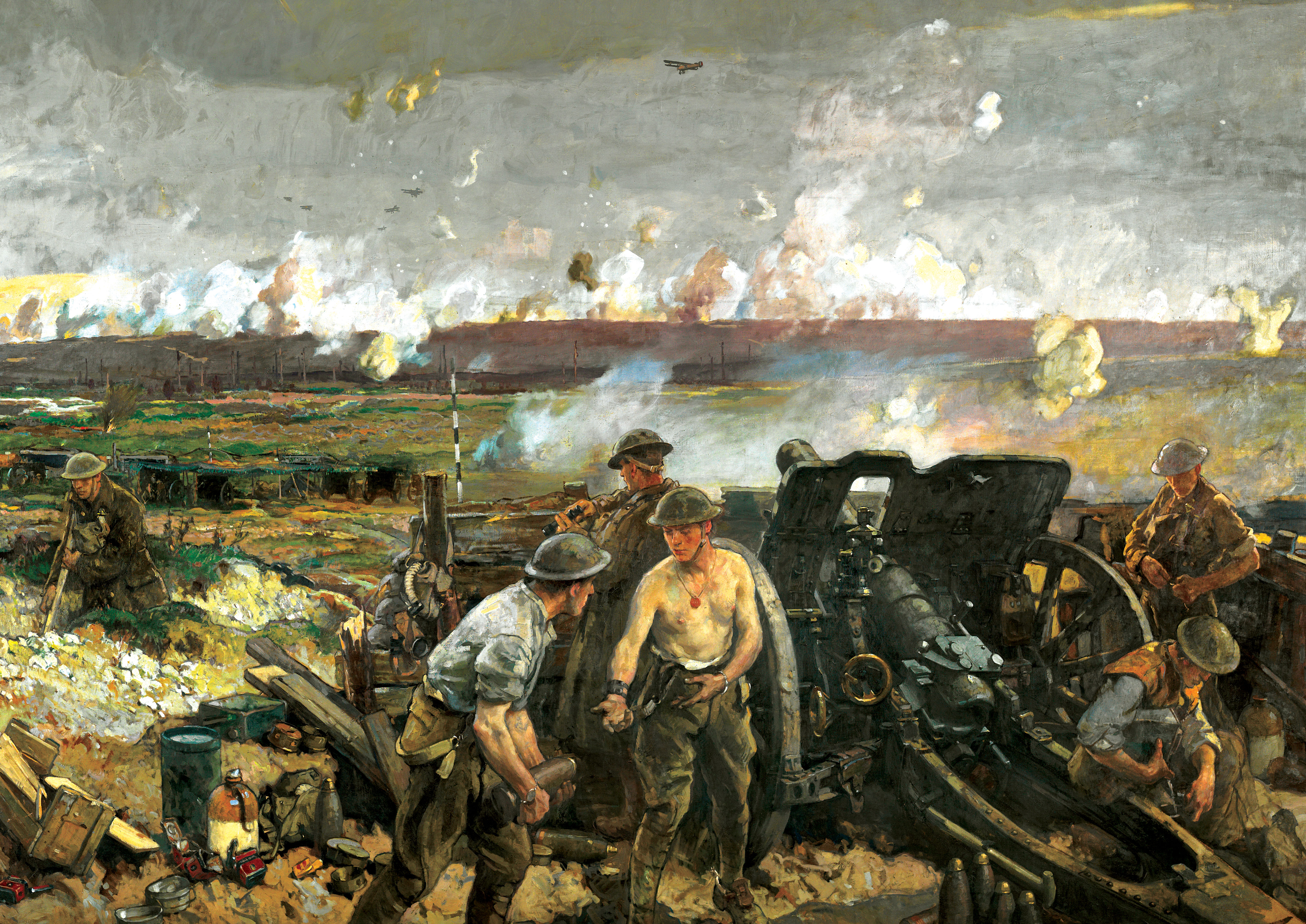
The wristwatch (below)—with a heavy-duty wristband and a sterling silver cage to protect the glass—was a type worn on First World War battlefields. [CWM/19710261-0160]

As Zero Hour approached on the morning of April 9, 1917, and waves of soldiers prepared to assault Vimy Ridge, almost a thousand British and Canadian guns began a complex creeping barrage to protect the advancing infantry.
“They’re supposed to be somewhere between 60 and 100 yards behind it, because they anticipate, of course, that shells are going to fall short,” said historian Tim Cook, who wrote a book about the battle and an essay on the artillery’s role.

This Waltham pocket watch was presented to Capt. John MacGregor, VC, by the city of Prince Rupert, B.C., in May 1919. [CWM/20170700-001]
The demanding nature of a creeping barrage—shifting fire 100 yards forward every three minutes—required a high degree of synchronization. Each battery had a detailed timed-fire plan
using co-ordinates plotted on a bar-rage map. One key factor in successfully carrying out this complex enterprise was taken for granted: battery commanders had a pocket watch or wristwatch that could be synchronized to the minute, if not the second.
“The gunners themselves made sure their watches were unified so they’re firing at the same time,” said Cook.
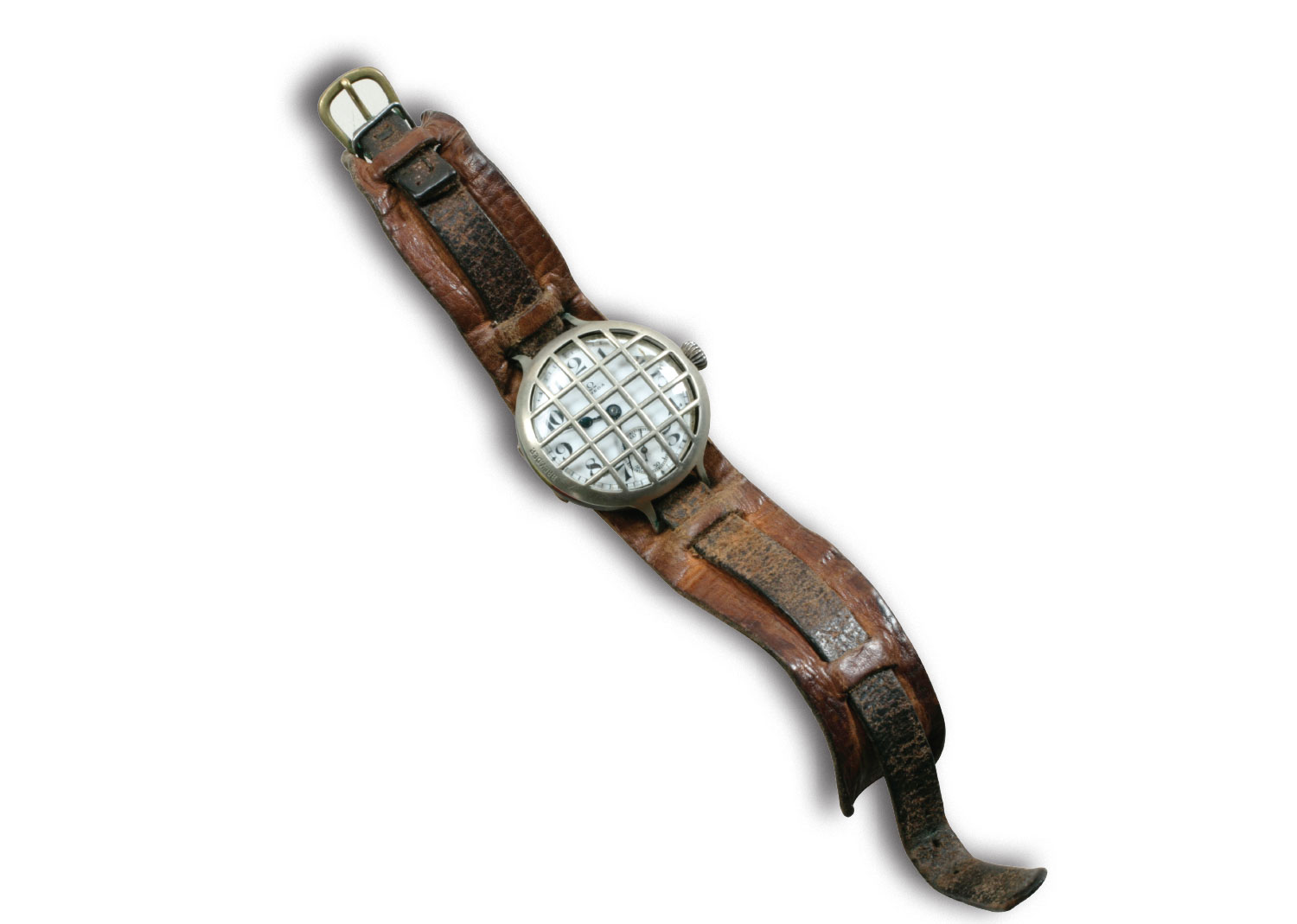
This Omega wristwatch. [CWM/20100106-019]
Mechanized warfare of the 20th century accelerated the evolution of reliable mass-produced watches, which had to be legible, accurate and durable for combat use.
Most Great War soldiers carried personal timepieces, while militaries issued watches to those whose duties made them essential, such as officers and non-commissioned officers commanding gun batteries. Letters home, preserved by the Canadian Letters and Images Project, are dotted with references to watches sent from home or purchased before heading to the front.
“Your watch is invaluable to me here. There are only three of us carrying them,” Robert Hale, a gunner in the 2nd Division, Canadian Expeditionary Force, wrote his fiancée, Alice, from Shorncliffe Barracks in England in 1915.
George Bird wrote to his father on April 16, 1917, requesting a wristwatch: “Get a good one, and also a good stout protection (metal) for it…. Have luminous face of course.”
Before the war, wristwatches—known as wristlets—were worn mostly by women. The war transformed them from feminine accessory to soldierly necessity. On the battlefield, a quick glance at a wristwatch beats fishing for a pocket watch.
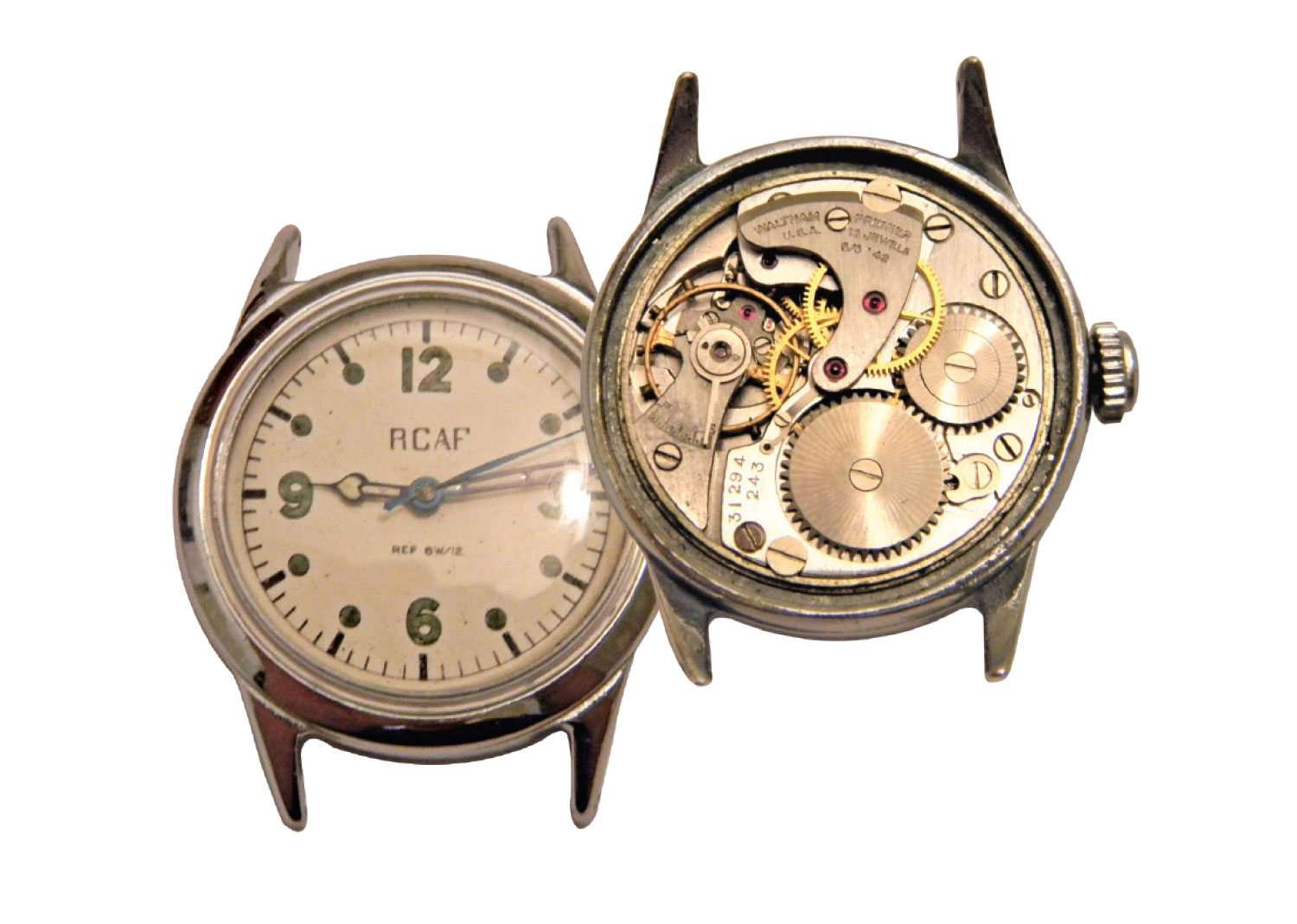
This air force navigator’s wristwatch was essentially identical to the Waltham A-11 U.S. military-spec field watch, which was dubbed the watch that won the Second World War and was produced in large volumes by several watchmakers in different variants. [Courtesy of Konrad Knirim]
Not everyone agreed. Thomas Johnson of Swift Current, Sask., wrote to John Aitkin, an acquaintance, saying he had stopped wearing the “beautiful watch” given as a going-away present after damaging it in a mock bayonet charge during training.
“I was very sorry, but expect that in such rough work as this, wristwatches are too delicate,” he wrote from a rear training area in France in December 1916.
The problem spawned the trench watch, a pocket watch converted to wear on the wrist by watchmakers, with lugs grafted onto the case and dials protected with steel mesh or other protective cover.
Some pre-First World War British field service manuals indicate that officers were authorized to wear their own watch on a wrist strap. Other ranks in special units were issued a limited number of watches.
It’s difficult to pin down what the CEF issued to soldiers. Cook said it’s possible that watches used by Canadians originated from British purchases, indicated by the “C Broad Arrow” (a military ordnance acceptance stamp used to mark government property) on the dial or case, a designation Canada carried into the Second World War.
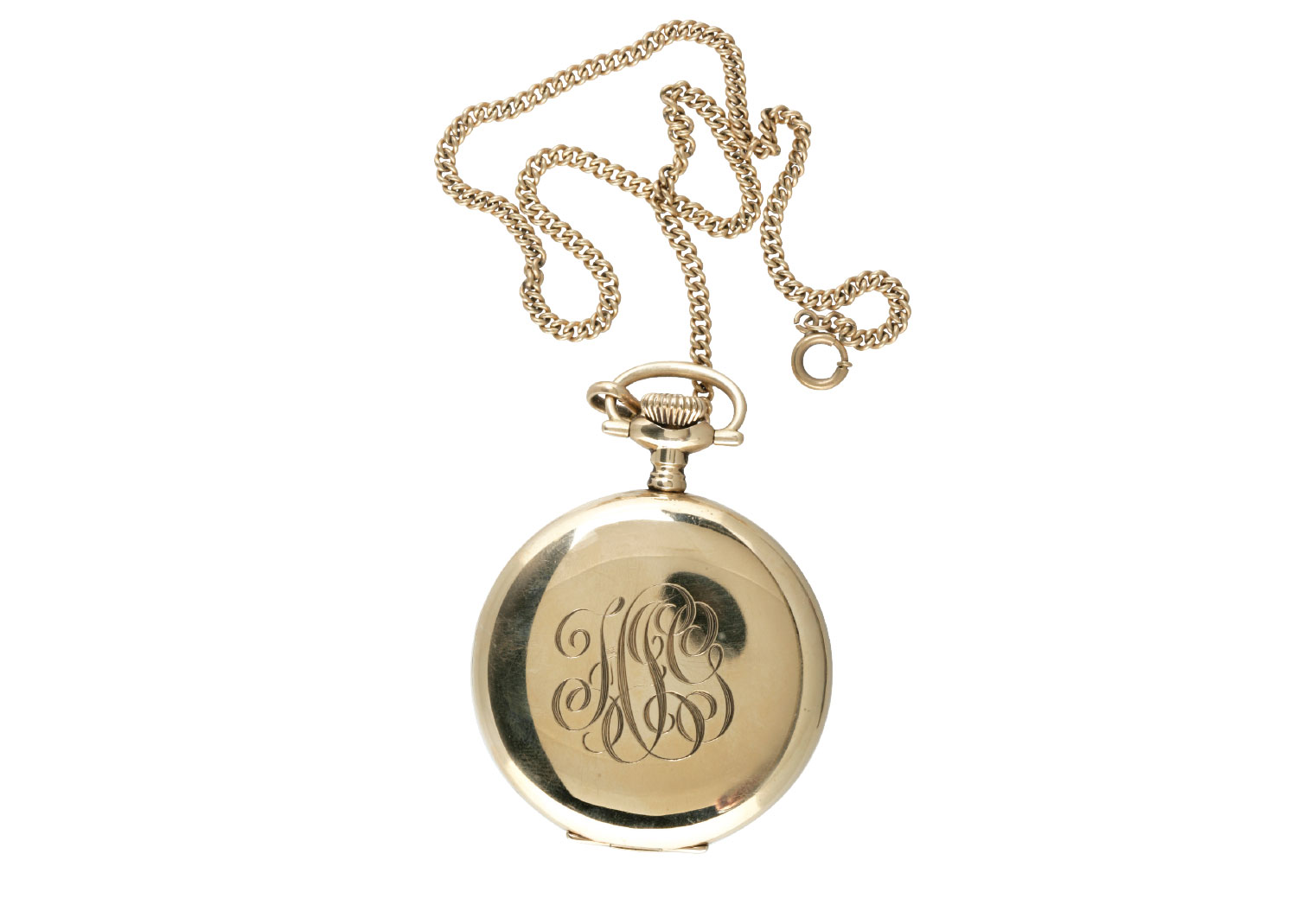
Engraved with his initials, this Waltham pocket watch was presented to Corporal Herman J. Good, VC, by the town of Bathurst, N.B., in April 1919. [CWM/20130405-005]
The pocket watch known as a General Service Time Piece was still used by some Canadian military personnel in the Second World War, but the basic three-hand field wristwatch predominated.
James Baker, training to be an air observer at Chatham, N.B., wrote home in August 1943 asking for an Omega wristwatch, which he said was the Royal Canadian Air Force’s official watch, because “they only issue one between two (we fly in pairs) and the ones they issue are none too accurate.”
Baker’s requirements included a luminous dial with “fairly big” numerals, a “full sweep luminous second hand” and a shockproof movement, all for about $45.
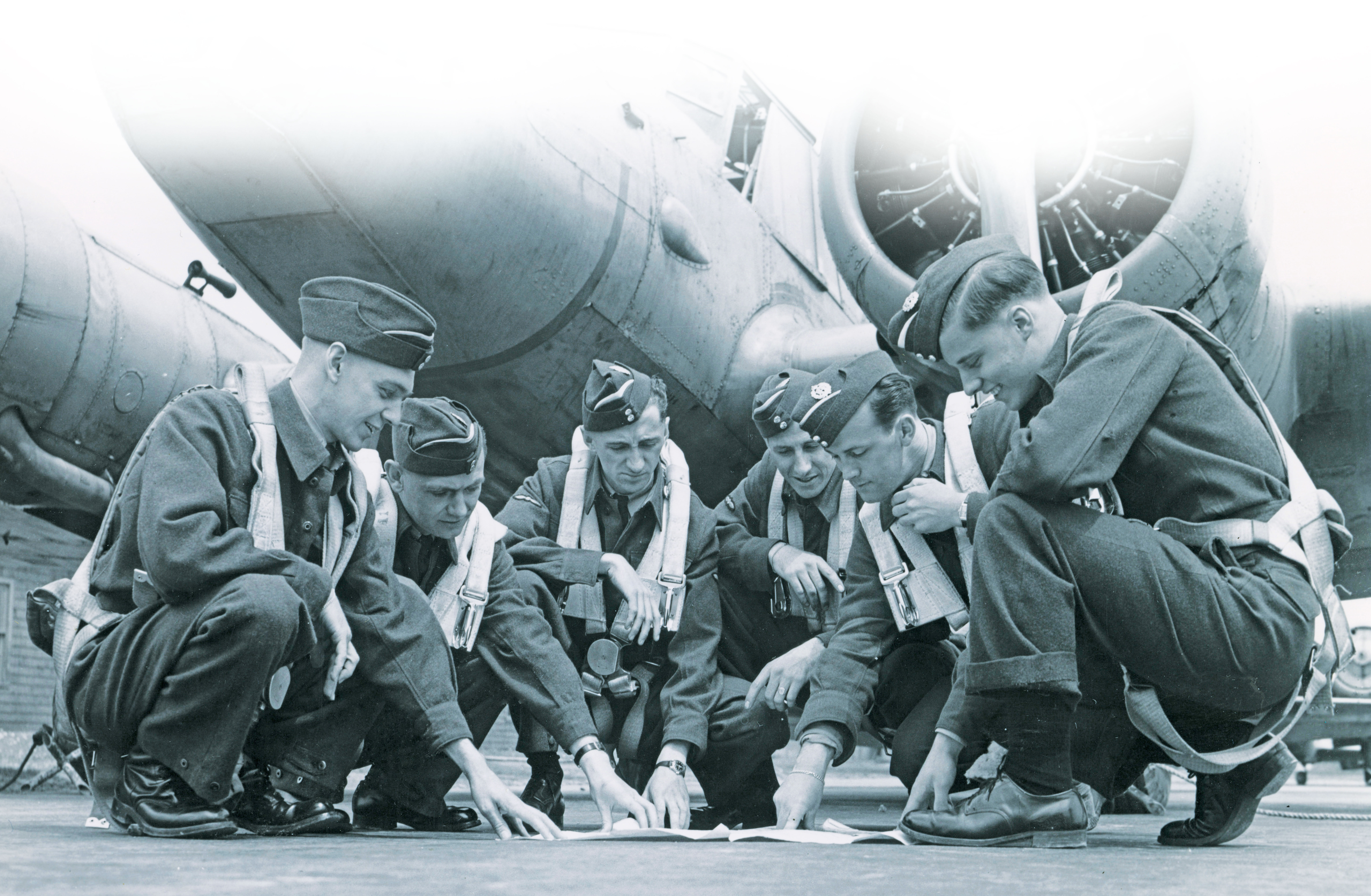
The RCAF opted for a single-button chronograph—one button starts, stops and resets the timer—perhaps for cost reasons. Two-button chronographs allow the wearer to stop and restart the timer without resetting, if needed. [Legion Magazine Archives]
“Do you think you could find a watch like that?” he asked. “I hope you can because I am going to need it badly.” It came a month later. “It has a 24-hour face and the seconds are numbered, just exactly what I needed,” Baker wrote.
Canada procured watches from a variety of makers, primarily from the United States and Switzerland (whose industry sold to both sides). Suppliers included Omega, Bulova, Hamilton, Elgin and Waltham, which provided versions of models already being made to military specification for American and British forces.
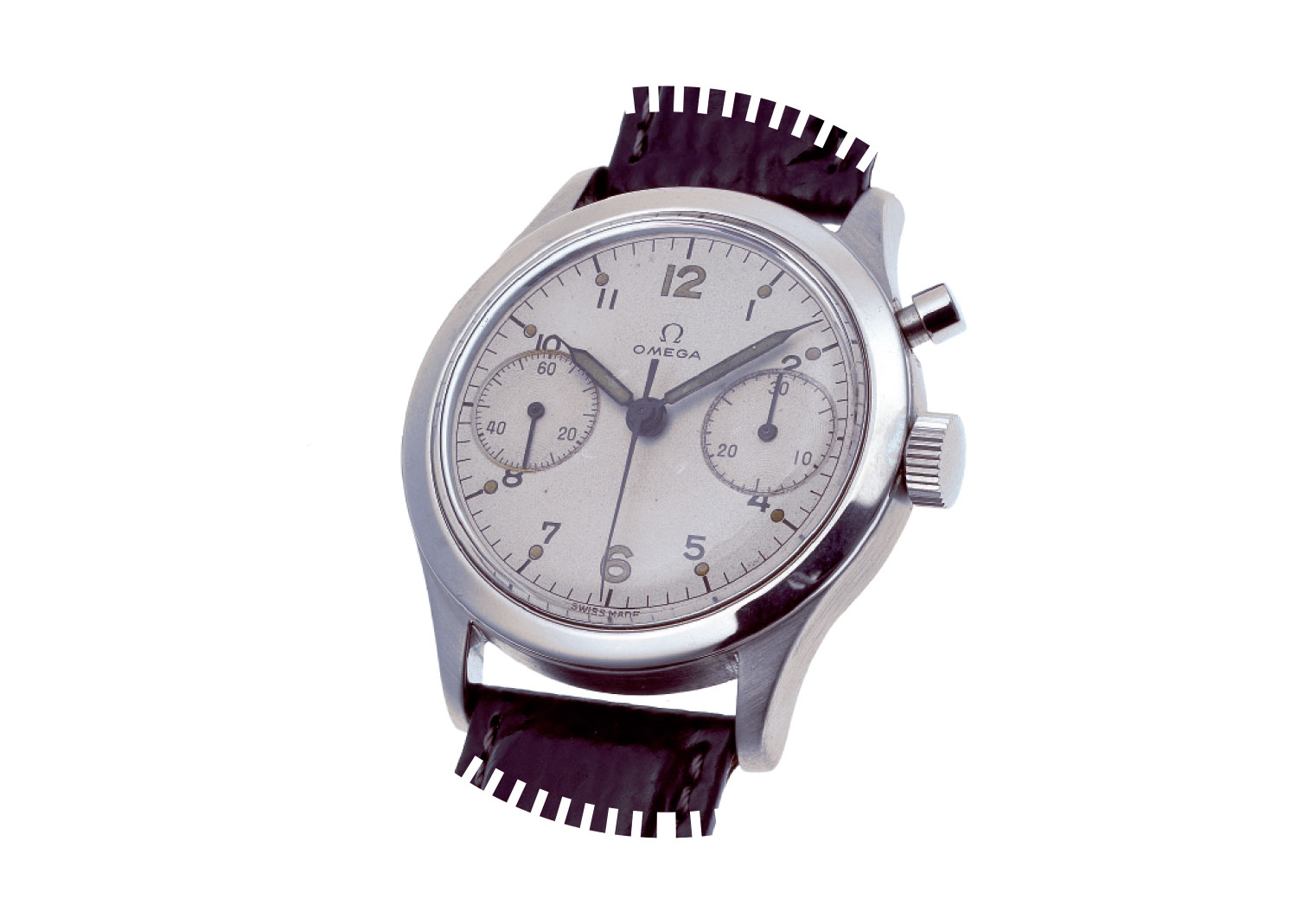
After the war, the RCAF began issuing chronographs to its pilots and navigators produced by several Swiss makers, including Omega, Breitling, Lemania and Rodania. Some were also made for the RCN. [Courtesy Omega Watch Company]
A prime example was the American A-11, produced by several watch manufacturers in variants for all services, designated 6B/150 by Canada and issued to RCAF navigators. A simple three-hand watch, its important feature was a “hacking” movement, where the second hand could be stopped to allow precise synchronization.
It’s difficult to estimate how many watches and what types Canada bought during the war and after. Surviving procurement documents have been lost or are dispersed in Library and Archives Canada’s various collections.
A rare find was a 1951 order-in-council, signed by Governor General Earl Alexander of Tunis, approving a Department of National Defence purchase of 2,000 “watches, waterproof, wristlet,” with strap for $35.90 each, including tax, from Henry Birks and Sons, perhaps for Korean War service.
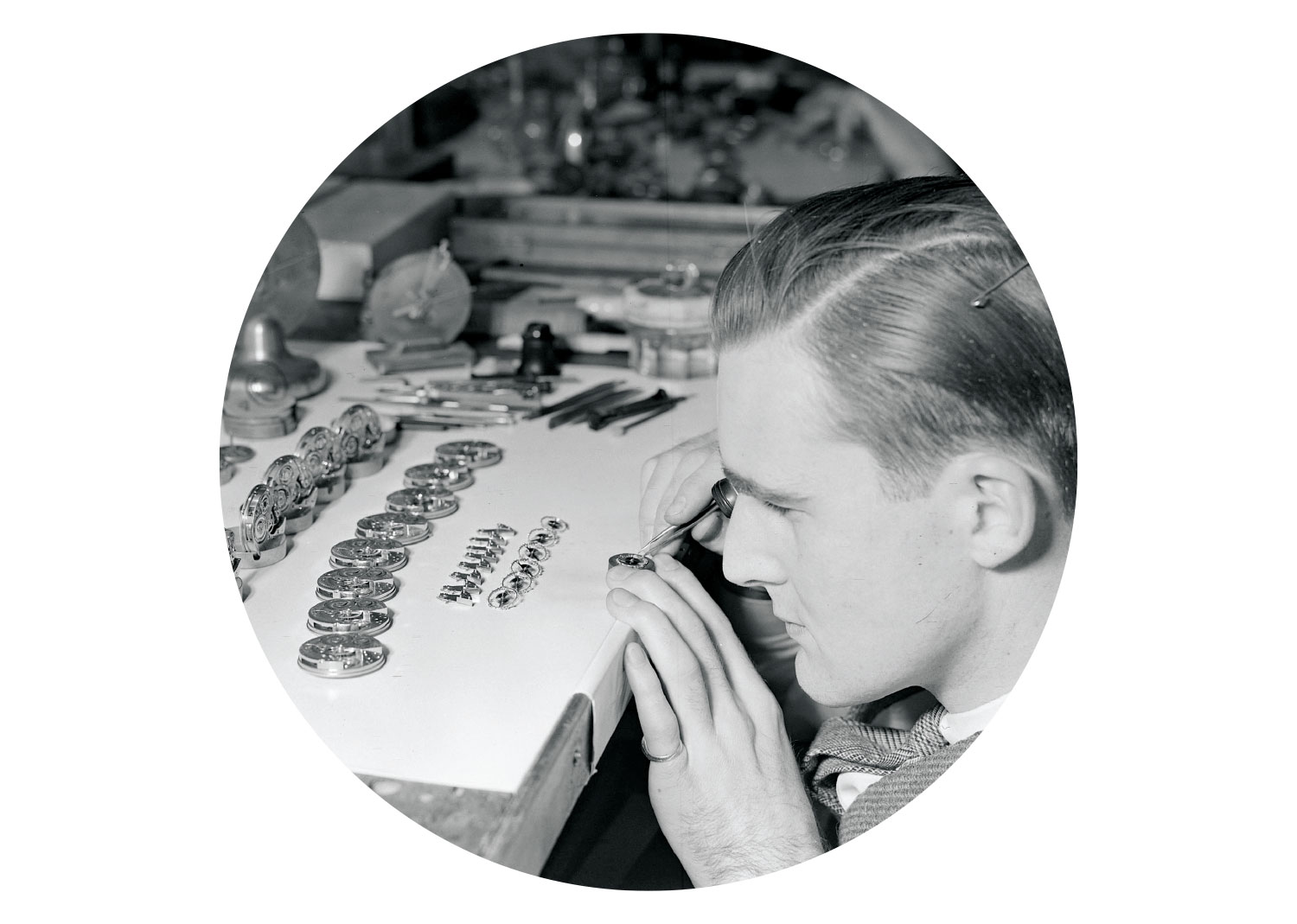
An adjuster with the Hamilton Watch Company tweaks a timepiece. [Courtesy of Steve Mertl]
In postwar years, Canada also purchased a number of chronographs—essentially a watch with a built-in stopwatch function—for RCAF pilots and navigators from Hamilton, Omega and Breitling, among others. Watches were issued for the duration of assignments or service, and were to be returned so they could be reissued. Many had a hard life with dubious maintenance.
“They were notoriously unreliable in the sense that often a hand would fall off or the thing would stop a week after you got it,” recalled former RCAF helicopter pilot Randall Wakelam, now a professor at Royal Military College of Canada in Kingston, Ont. “They were not grand timepieces. It was nice to have it because it was free, just like your sunglasses.”

An ad for “Benson’s Luminous ‘Active Service’ Watch” was intended to appeal to military men during the First World War. [U.S. National Archives]
Bruce Barnes was issued a watch when he began pilot training. Like Wakelam’s, it came wrapped in cushioning plastic inside a sealed tin. Student pilots were required to synchronize their watches with ground control each morning before flight operations.
“First there’d be a time hack and we’d all pull out our watches and all exactly time-hack them,” said Barnes, who, unlike Wakelam, had no complaints about his watch’s performance.
Barnes turned in his watch when he became a weapons controller aboard Airborne Warning and Control System aircraft. But crews still wore personal watches to keep track of tasks and as backup in case an aircraft’s electronics failed. “Everyone wore a watch because you had to internally co-ordinate how long something would take,” he said.
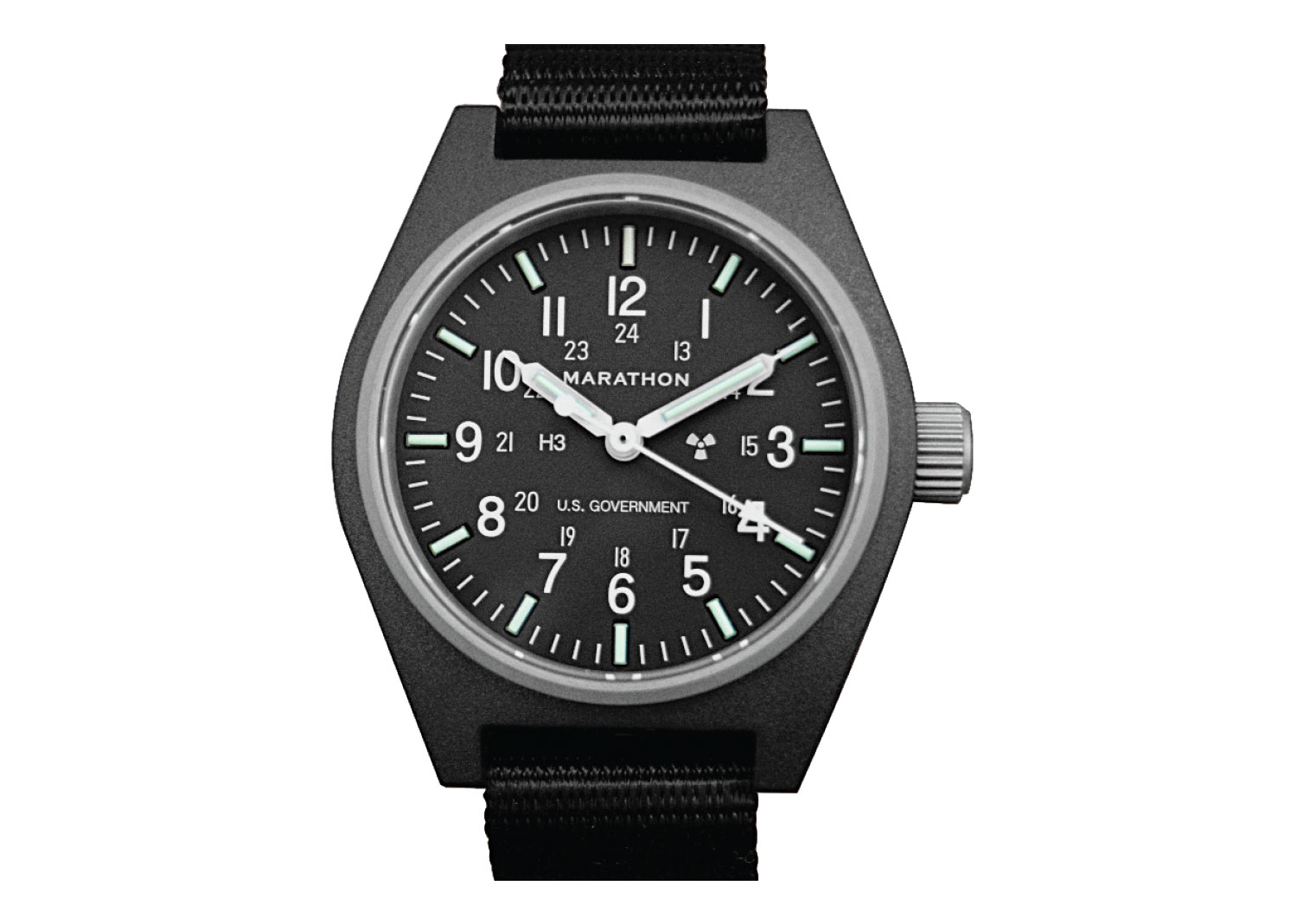
The Marathon General Purpose Mechanical field watch was produced mainly for the U.S. military and issued in large numbers for the Gulf War in 1990. [Courtesy of Marathon Watch Company]
Militaries today, including Canada’s, issue few watches, mainly to specialized units such as navy divers and search-and-rescue personnel.
The Tudor Submariner, from the subsidiary of famed Swiss watchmaker Rolex, became the Royal Canadian Navy’s dive watch. They were issued to units rather than individuals, recalled retired Lieutenant-Commander Tim Flath, and were signed out when needed.
“A 12-man dive team was entitled to six watches on our distribution-authority accounts,” said Flath. “Because they were so expensive, it was up to the ship’s team diving officer to manage the DA account. At the end, when they turned over to the next diving officer, they had to produce six of these very expensive watches.”
Divers enjoyed the Tudors as status symbols, said Flath, but they were not particularly prized as diving tools.
“Quite frankly, they were the crappiest watch I’ve ever seen in my life,” he said. “None of them kept time. The best one I had lost maybe about four minutes a day. So, I didn’t really trust them as far as I could throw them.”
Watches weren’t essential anyway, Flath explained. Ship’s divers were tethered in pairs and the dive was controlled by a supervisor on the surface.
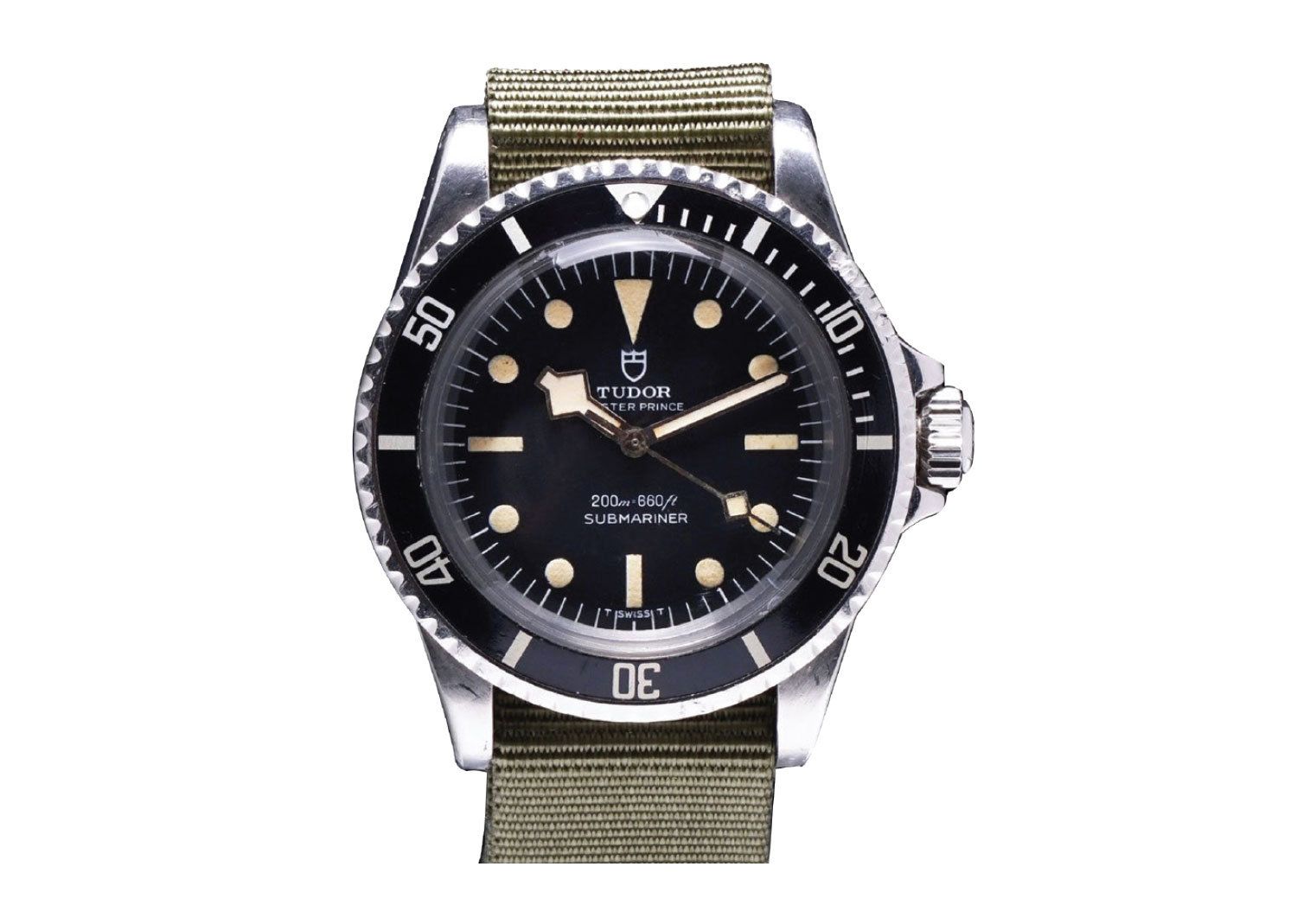
The advent of undersea operations and ship repair created a demand from navies for robust dive watches. The RCN adopted the Tudor Submariner, also used by the French and South African navies. [Courtesy of Tim Flath]
Former diver Grant Heddon, a retired chief warrant officer, confirmed the Tudor was more of a prestige accessory. As dive watches they simply weren’t that practical, especially on deeper dives where light was limited. “I found it was hard to see,” said Heddon. Divers who wanted a watch found substitutes, such as the inexpensive Timex Ironman.
Arm-worn dive computers have made watches redundant, but the navy still buys some in small batches from the Marathon Watch Company, a Toronto-based firm with a factory in Switzerland. For decades, Marathon has supplied the Canadian and American militaries with general-purpose field watches and specialized timepieces for aviation, search and rescue and diving.
Vice-president Mitchell Wein said he helped redesign Marathon’s dive watch after speaking to veteran navy divers, making the timing bezel easier to turn with gloved hands and better protecting the crown. But the navy never settled on a standard dive watch to replace the Tudor, said Flath.
American troops in the Gulf War admired the Marathon worn by their Canadian allies, said Wein, prompting a call from the U.S. government asking for a version.
Despite the dominance of highly accurate quartz watches, militaries still order mechanical versions of Marathon’s watches. They don’t need batteries and aren’t vulnerable to a disabling electromagnetic pulse. “They have to have something reliable and mechanical,” said Flath.
Advertisement






